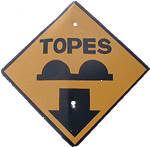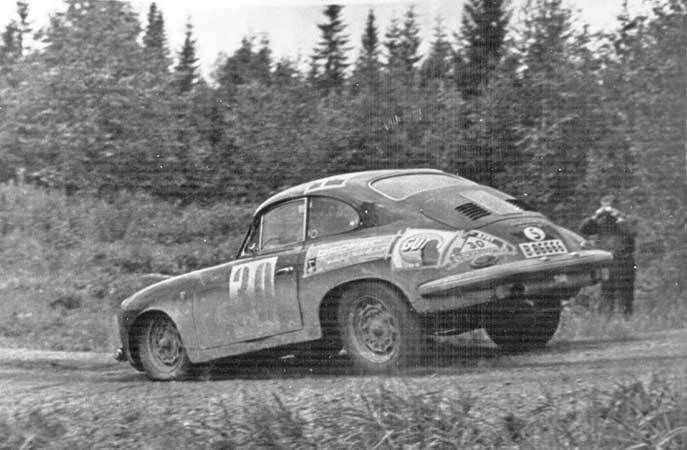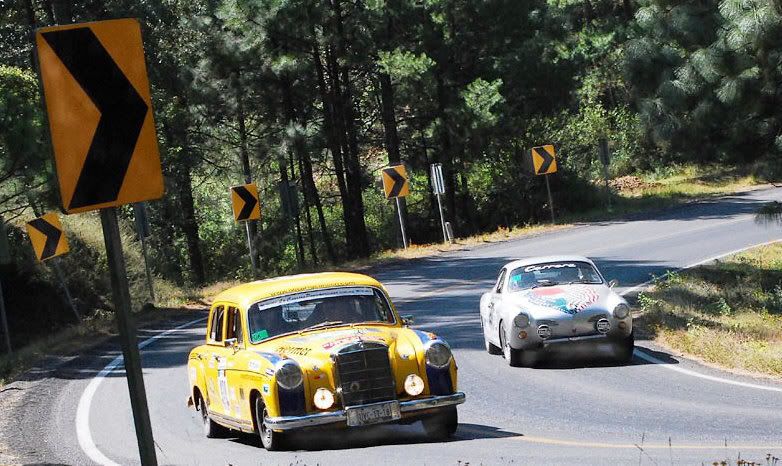Posted: Sun Jan 11, 2009 6:12 am
So, what will I gain by using a camber compensator without changing the torsion bars? Nothing as far as I can see? I`m not to sure of whether I should install one or not.
Found this post on thesamba. VERY good one.
http://www.thesamba.com/vw/forum/viewto ... light=zbar
The Z-bar and camber compensator should not be described as being 'the same'. This is really an over-simplification, although they have common effects.
One thing to remember is that there are two types of CC; one which simply cradles the axle tubes and one that is 'tied' to the axle tubes. In the simple cradled version, it limits the simultaneous downward movement of the axles in either straight ahead driving or cornering. In the case of 'straight' and at high speed, the car raises up naturally, which reduces traction at the rear and increases the feeling of instability (cross-winds etc). Add to that the sudden need to brake hard, and the rear raises up even further. The CC limits this upward movement. In cornering, it allows the car to role but still limits the axle movement and so resists wheel tuck. When you tie the ends of the CC, I think it adds stiffness at the back while still preventing the angles necessary for wheel tuck. However, it should also promote over-steer, which is not a good thing.
The Z-bar works entirely differently. First of all, the Z-bar is not actually the primary element here. The 'system' is based around the fact that these cars also have softer rear torsion bars. Softer rear suspension, increases rear roll, placing more of the roll forces on the front axle and in turn reduces over-steer (or increases under-steer). This has the inherent effect of avoiding the conditions for wheel tuck. What the Z-bar does is put back the suspension lost through using the softer main torsion bars, only when needed. So it is completely ineffective when simply cornering but under heavy loads, it will increase the spring rate progressively (the connecting bar running from left to right is a long thin torsion bar).
What the CC does not do, is reduce over-steer or provide progressive rear suspension. There is an argument, however, that suggests that the inside rear wheel exerts some upward force on the outside wheel through the CC which could result in more under-steer, but I am not convinced of this. What the Z-bar does not do, is limit the simultaneous downward movement of the axles tubes, but VW did alter the camber of the rear wheels to limit the negative effects of this. The Z-bar can be made to replicate the CC characteristics by removing the inherent play in the linkage. However, this may result in some interference, in the system, during cornering.
All in all the Z-bar system is a little more subtle about how it goes about its job, plus, it has more ground clearance and does not use the gearbox as a mounting point.
While the Z-bar cars provide what I would call a more "positive" neutral handling characteristic, IRS goes a step further and makes the vehicle actually under-steer. Manufacturers prefer under-steering cars as they consider them inherently more safe.
Found this post on thesamba. VERY good one.
http://www.thesamba.com/vw/forum/viewto ... light=zbar
The Z-bar and camber compensator should not be described as being 'the same'. This is really an over-simplification, although they have common effects.
One thing to remember is that there are two types of CC; one which simply cradles the axle tubes and one that is 'tied' to the axle tubes. In the simple cradled version, it limits the simultaneous downward movement of the axles in either straight ahead driving or cornering. In the case of 'straight' and at high speed, the car raises up naturally, which reduces traction at the rear and increases the feeling of instability (cross-winds etc). Add to that the sudden need to brake hard, and the rear raises up even further. The CC limits this upward movement. In cornering, it allows the car to role but still limits the axle movement and so resists wheel tuck. When you tie the ends of the CC, I think it adds stiffness at the back while still preventing the angles necessary for wheel tuck. However, it should also promote over-steer, which is not a good thing.
The Z-bar works entirely differently. First of all, the Z-bar is not actually the primary element here. The 'system' is based around the fact that these cars also have softer rear torsion bars. Softer rear suspension, increases rear roll, placing more of the roll forces on the front axle and in turn reduces over-steer (or increases under-steer). This has the inherent effect of avoiding the conditions for wheel tuck. What the Z-bar does is put back the suspension lost through using the softer main torsion bars, only when needed. So it is completely ineffective when simply cornering but under heavy loads, it will increase the spring rate progressively (the connecting bar running from left to right is a long thin torsion bar).
What the CC does not do, is reduce over-steer or provide progressive rear suspension. There is an argument, however, that suggests that the inside rear wheel exerts some upward force on the outside wheel through the CC which could result in more under-steer, but I am not convinced of this. What the Z-bar does not do, is limit the simultaneous downward movement of the axles tubes, but VW did alter the camber of the rear wheels to limit the negative effects of this. The Z-bar can be made to replicate the CC characteristics by removing the inherent play in the linkage. However, this may result in some interference, in the system, during cornering.
All in all the Z-bar system is a little more subtle about how it goes about its job, plus, it has more ground clearance and does not use the gearbox as a mounting point.
While the Z-bar cars provide what I would call a more "positive" neutral handling characteristic, IRS goes a step further and makes the vehicle actually under-steer. Manufacturers prefer under-steering cars as they consider them inherently more safe.



